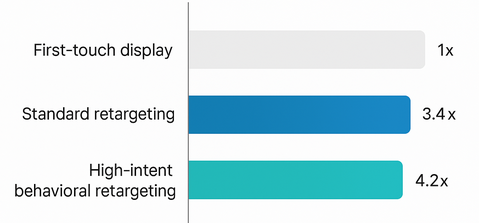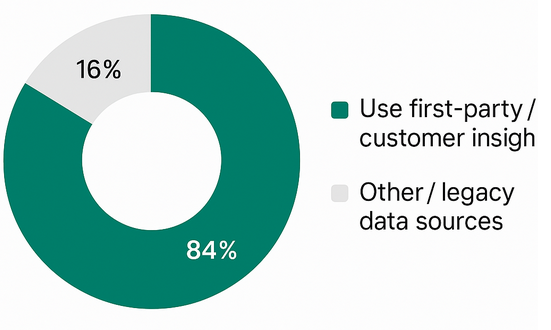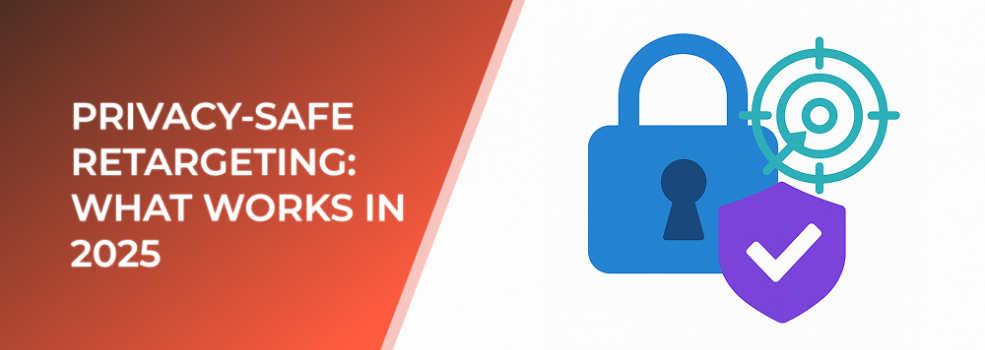Retargeting has undergone a major transformation. The deprecation of third-party cookies, stricter regional privacy laws, and the platform shift toward consent-based tracking have forced marketers to rethink how they reconnect with warm audiences.
Yet performance-driven retargeting is far from dead. Instead, it now relies on cleaner data pipelines, transparency, and high-intent signals collected directly from users. In 2025, the most effective strategies share three traits: compliance, high-quality first-party data, and meaningful engagement.
Why Privacy-Safe Retargeting Matters More Than Ever
Consumers are increasingly aware of how their data is used. According to recent industry surveys, 78 percent of users say they prefer brands that clearly communicate how their information is collected and applied. This shift influences both trust and conversion behavior.
At the same time, brands still rely heavily on retargeting because it delivers measurable value. Research shows that website visitors who are re-engaged convert at rates 3–5 times higher than new visitors. In 2025, the challenge is keeping this performance while respecting user privacy.
Effective Retargeting Tactics That Are Privacy-Safe
1. Server-Side Tracking and Conversion APIs
Server-side measurement reduces reliance on browser data and ensures more consistent event tracking. Brands using server-side pipelines report up to 28 percent more accurate conversion attribution. More accuracy means better-optimized retargeting segments.
2. First-Party Data Collection With Clear Consent
Forms, gated content, quizzes, product finders, and loyalty programs remain essential. In 2025, the average brand captures 25–35 percent more consented data when using interactive formats instead of static signup forms.
3. High-Intent Engagement Signals
Retargeting no longer depends solely on page visits. Now, high-performing segments include:
-
Users who interacted with on-site product recommendations
-
Visitors who spent more than 45 seconds on key pages
-
Repeat viewers of videos or interactive modules

Brands using retargeting see on average 3.4× higher conversion than first-touch display campaigns (2025 benchmark)
These signals correlate strongly with purchase intent. For example, viewers who watch more than 50 percent of a product video convert 2.1 times more often than those who don’t.
4. Privacy-Friendly Audience Expansion
Instead of broad data sharing, platforms now rely on aggregated or modeled insights. When supplemented with first-party data, expanded audiences can increase reach by 20–40 percent while remaining compliant.
5. Frequency Management
Overserving ads can appear intrusive. In 2025, the ideal retargeting frequency is between 5–7 impressions per user per week. Campaigns exceeding 10 impressions show a 19 percent decline in click-through rate.
How to Build a Privacy-Safe Retargeting Framework in 2025
Step 1: Map Your Consent Sources
Know exactly where and how data enters your system. Maintain a transparent user permissions log.
Step 2: Strengthen First-Party Data Pipelines
Ensure event tracking is accurate, deduplicated, and consistently delivered. Prioritize server-side event flows.
Step 3: Activate High-Intent Segments

84% of organisations now prioritise first-party and customer insight data as their top sources (2024-25)
Use behavioral signals tied to genuine interest, not passive browsing.
Step 4: Test Creative and Frequency
Monitor how different ad variations perform across your segments. Optimize frequency caps to avoid fatigue.
Step 5: Measure Incrementality
In 2025, attribution often blends modeled and deterministic data. Incrementality testing shows whether your retargeting ads are driving real results. Brands that use incrementality analysis report up to a 22 percent improvement in budget efficiency.
Final Thoughts
Privacy-safe retargeting isn’t a limitation — it’s an upgrade. By prioritizing consent, high-intent data, and transparent measurement, brands can build retargeting systems that perform better and align with today’s expectations.

